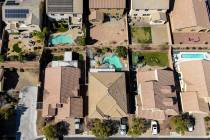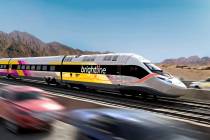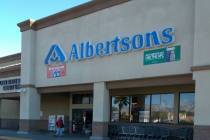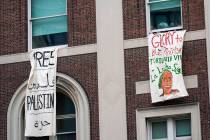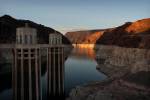Local committee’s solution will keep water flowing
I’ve been a resident of Southern Nevada since 1979 and have seen our community grow from 400,000 people back then to around 2 million today.
I’ve been fortunate enough to have played a role and had a voice in certain public policy matters through the years, and one of the most important of those has been the availability and quality of our water supply.
I’ve served on various water committees dating to 1990, when discussions were beginning about the creation of the Southern Nevada Water Authority.
During that time, I’ve represented a variety of interests on water matters, from the Southern Nevada Homebuilders Association and commercial developers to various gaming organizations.
My role on the most recent committee, however, was one of the rate payer. I took that role very seriously, as not only do I own a home and have a large family here in Southern Nevada, I own a very small office downtown.
With that in mind, I approached the issue from the perspective of what the most stable sources of revenue would be for the water authority in our changing and challenging economic times. I noted that the majority of the authority’s expenses, upward of 75 percent, are fixed. My opinion, therefore, was that 75 percent of the authority’s revenue should also be fixed. Further, my opinion was that 25 percent of the rate should be commodity-based, because that portion of the rate is what is variable. Because 25 percent of the authority’s expenses, give or take, are variable, I felt that no more than 25 percent of the rate should be variable.
Initially, most of the committee held the opposite opinion — that 75 percent of the rate should be based on commodity charges. The logic there was that the more you use, the more you should pay. Our tiered system, however, already provides for higher rates for more consumption.
In the end, the group of people assembled — ranging from senior citizens to homeowners to the resort industry, labor and so on — agreed to compromise with a 50 percent fixed charge and a 50 percent commodity charge. While not ideal in my mind, I feel that given the circumstances and the hard work of the diverse group, that was the best proposal.
Some may argue that construction of the so-called “third straw” at Lake Mead is not necessary. I am not one of those. I think the third straw is a critical component to this valley’s infrastructure.
Years ago, I was on the committee that determined that much of our water infrastructure would be paid for by new connection charges. The idea at the time was that growth should pay for growth.
Many of us at the time argued that while development was on quite a roll back then, it might not continue in perpetuity. Well, here we are.
We are in what many, including me, refer to as “the new normal.” As such, my only opinion is that we must pay for our water infrastructure in a “more normal” way.
The water authority did a painstaking job of providing what I believe to be reliable information. The committee was well-attended, unlike other citizen committees I have served on. Each member participated and was heard, and ultimately, the consensus on the committee was proposed.
Nobody, including me, wants to pay more for services. I also don’t like paying to maintain my car or my air conditioner. But I sure like it when they run efficiently, especially in the summer.
And I’m glad I’ve never woken up to find the tap has run dry.
This solution, I believe, will keep it that way.
Terry Murphy is president of Strategic Solutions, a government consulting firm. She served on the Southern Nevada Water Authority’s Integrated Resource Planning Advisory Committee.









